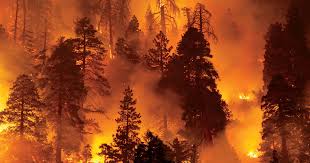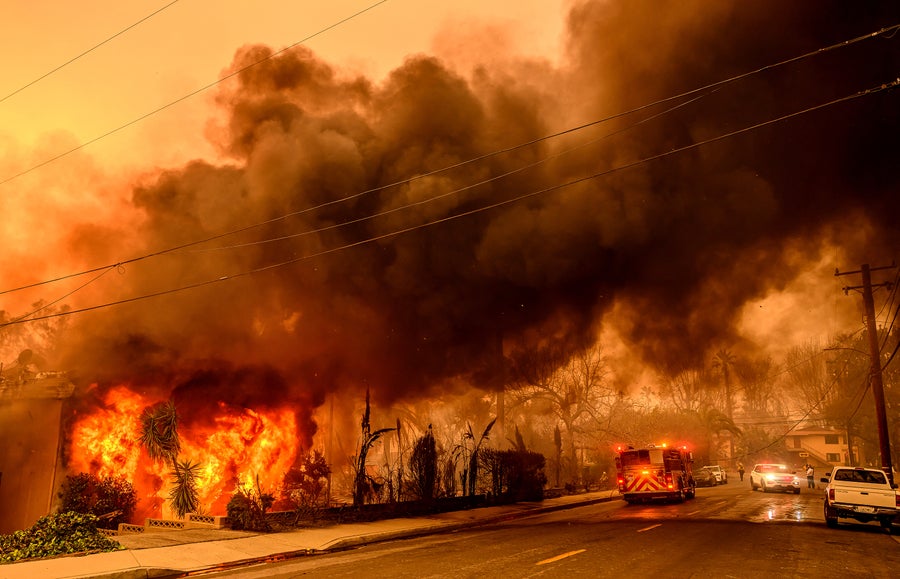The Los Angeles Wildfires: A Deep Dive into the History

Impact, and Efforts to Combat the Flames
Wildfires have long been a part of California’s natural landscape, but in recent decades, the frequency, intensity, and destruction caused by these fires have escalated dramatically. Los Angeles, a sprawling metropolis nestled between the Pacific Ocean and the rugged mountains, is particularly vulnerable to the devastating effects of wildfires.
These fires are not just environmental disasters—they also have far-reaching social, economic, and health consequences. In this blog post, we’ll explore the history of wildfires in Los Angeles, their environmental and human impact, the role of climate change, and the tireless efforts of firefighters and first responders to combat these blazes.
1. The History of Wildfires in Los Angeles
California has always been prone to wildfires due to its Mediterranean climate, with hot, dry summers and mild, wet winters. The terrain of Los Angeles, with its dry brush and canyons, makes it particularly susceptible to fires. However, the frequency and severity of wildfires in the region have intensified over the years, largely due to human activity, climate change, and urban expansion into fire-prone areas.
Early Wildfires and the Role of Nature
Historically, wildfires were a natural part of the ecosystem, helping to maintain the balance of plant and animal life in California’s diverse environments. Some plant species, such as the California chaparral and coastal sage scrub, are fire-adapted and actually require fire to regenerate. Native American tribes also used controlled burns as a method of land management. However, as Los Angeles grew and became more urbanized, the interaction between humans and wildfires became more destructive.
Notable Fires in Los Angeles History
Over the years, Los Angeles has experienced several high-profile wildfires that have shaped public perception and fire management policies. Some notable fires include:
The Bel Air Fire (1961): This fire burned more than 6,000 acres and destroyed over 500 homes in the affluent Bel Air neighborhood. It was one of the first major wildfires in Los Angeles to gain widespread media attention.
The 1993 Malibu Fire: This fire destroyed nearly 300 homes and was one of the most destructive fires in Malibu’s history, which has been prone to wildfires due to its coastal vegetation and dry climate.
The 2009 Station Fire: This fire, one of the largest in Los Angeles County history, burned over 160,000 acres and killed two firefighters. It was particularly devastating due to its proximity to the Angeles National Forest and the large number of homes in the area.
The 2017 Thomas Fire: Although technically outside of Los Angeles proper, the Thomas Fire, which burned in Ventura and Santa Barbara counties, had a significant impact on Los Angeles’ air quality, as smoke blanketed the region for weeks.

2. The Impact of Wildfires on the Environment and People
The environmental and social impact of wildfires in Los Angeles is profound and long-lasting. Wildfires don’t just destroy property—they also alter landscapes, harm wildlife, and pose significant health risks to communities.
Destruction of Homes and Businesses

The most visible impact of wildfires in Los Angeles is the destruction of homes and businesses. Wildfires frequently threaten residential neighborhoods, particularly those located in the Wildland-Urban Interface (WUI), where densely populated areas meet natural, fire-prone landscapes. As urban sprawl continues to push further into the hills and mountains, the risk of catastrophic fires increases.
When fires strike, entire communities can be displaced, leading to emotional, financial, and physical hardship. The rebuild process can take years, and many residents never fully recover from the trauma and losses they endure.
Loss of Wildlife Habitat and Biodiversity
Los Angeles is home to diverse ecosystems, including coastal sage scrub, oak woodlands, and grasslands, which provide critical habitat for wildlife species. Wildfires destroy these habitats, displacing countless animals, from small mammals to large predators like mountain lions. The destruction of these natural habitats can lead to long-term ecological imbalances, with some species struggling to recover after being forced from their homes.
Additionally, wildfires often result in the loss of vegetation that helps prevent soil erosion. This creates further environmental challenges, as burned areas are more prone to mudslides and flash flooding, particularly during the rainy season.
Health Risks and Air Quality

Firefighters use a variety of techniques to combat wildfires, including controlled burns, fire breaks, and aerial firefighting methods such as water-dropping helicopters and planes. Advanced technology, such as drones for aerial surveillance and satellite mapping, has improved fire tracking and management, allowing responders to assess fire behavior in real-time and make more informed decisions.
Coordination and Resources
Fighting large wildfires requires collaboration between local, state, and federal agencies. The California Department of Forestry and Fire Protection (CAL FIRE) plays a significant role, and during particularly devastating fires, resources from across the country are mobilized to assist in firefighting efforts. Despite their heroic work, the growing frequency and intensity of fires often overwhelm these resources, highlighting the urgent need for increased investment in fire management and climate change mitigation.
Conclusion: A Call for Action
The wildfires in Los Angeles are a stark reminder of the growing challenges posed by climate change, urban expansion, and environmental degradation. While much has been done to manage and mitigate the effects of wildfires, the increase in frequency and intensity suggests that more needs to be done.
It is crucial that we address the root causes of climate change, promote better land management practices, and invest in fire prevention and firefighting resources. The heroes who risk their lives to fight these fires deserve our gratitude and support, and the communities affected by wildfires need long-term assistance and recovery plans.
As we face an uncertain future, the relationship between Los Angeles and wildfires will continue to evolve. However, with coordinated efforts, greater awareness, and a commitment to sustainability, we can work towards a safer and more resilient future for the city and its residents.

1 comment